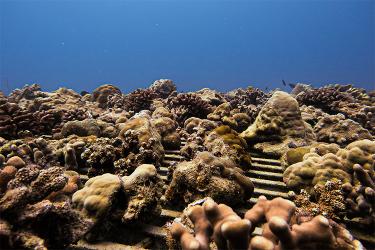The range of sardines, swordfish, and albacore tuna off the West Coast will shift north in coming decades as climate warming moves their habitat in that direction. A new analysis focused on these three benchmark species as ecological barometers.
Future Seas is a collaboration of diverse ecologists, economists, oceanographers, and other scientists from NOAA Fisheries, the University of California Santa Cruz, and other institutions. It projects impacts of climate change on the fisheries off California, Oregon, and Washington. They are compiling the most recent science through models of the California Current Ecosystem to help coastal communities anticipate and adjust to climate-driven changes and develop strategies to manage impacts.
The effort is a pilot project for NOAA’s new Climate, Ecosystems, and Fisheries Initiative. Future Seas links high-resolution ocean models of the California Current System with ecological and social models to assess options for climate-ready management strategies.
The models that simulate future conditions show that an increase in sea surface temperatures of 2 to 4 degrees will change the ecosystem in unprecedented ways. While the predictions of different combinations of models called ensembles vary, one of the main drivers of change will be the redistribution of species in coastal waters. That will influence fishery dynamics including openings and closures, catch allocations, and the ports where fishing fleets are based.
The models have only recently begun to show how climate change is likely to affect the biomass, or overall volume, of different species. The scientists concluded: “It seems likely that engagement of U.S. West Coast communities with specific species and fisheries will change in the coming decades, and flexibility in both fishing grounds and catch portfolios will be important processes for community resilience.”
Delivering on Climate Strategy
These analyses will help deliver on the NOAA Fisheries Climate Science Strategy. It aims to provide long-term projections of how climate change will affect fisheries, which fisheries and communities may be most vulnerable, and which are most resilient.
Their analysis centers on three representative species, each with ecological and economic values likely to be affected by climate change. Sardines are small boom-and-bust pelagic species known for supporting Cannery Row in Monterey around the time of the Depression in the 1930s and fluctuating since. Swordfish are large, highly valued fish that feed deep underwater. Albacore tuna migrate long distances between spawning areas and feeding grounds where they mature and have expanded with warming temperatures.
All three will likely shift north toward the pole, with impacts on fishing fleets and implications for local ecosystems. For instance, albacore landings are likely to shift north, benefiting fishermen in the Pacific Northwest. By contrast, Southern California fishing communities that have increasingly turned to albacore to make up for other fisheries that have declined may lose out. The shift may be felt especially by smaller fishing vessels that rely on albacore to supplement their fluctuating catch of other species, but have less flexibility to travel long distances to fish.
“Larger vessels are projected to be more responsive to changes in albacore distribution, employing a ‘follow the fish’ adaptation strategy, and switching landing ports more quickly if it becomes economically beneficial,” the analysis concludes. “Small vessels, which have more limited mobility, are more likely to keep landing in the same community.”
The analysis examined the likely geographic change in the distribution of each species, in light of their management. Here is how they break down.
SWORDFISH
Management Plan
Highly Migratory Species
Fishing Gear
Deep-set buoy gear, longline, drift gillnet
Current (2023) Stock Status
Not overfished and no overfishing
Access
Gear restrictions, time and area closures, permits
Geographic shift
About 200 kilometers north
Change in landings
Not determined
PACIFIC SARDINE
Management Plan
Coastal Pelagic
Fishing Gear
Purse Seine
Current (2023) Stock Status
Overfished; directed fishery is closed
Geographic shift
500-800 kilometers north
Change in landings
20-50 percent decline in Southern California; up to 50 percent increase in Pacific Northwest
ALBACORE
Management Plan
Highly Migratory Species
Fishing Gear
Troll, pole and line
Stock Status
Not overfished or subject to overfishing
Access
Open
Geographic shift
400-500 kilometers north
Change in landings
5-60 percent decrease in Long Beach and San Diego by 2100; 25-100 percent increase in landings in Pacific Northwest relative to last two decades
FOR MORE INFORMATION




